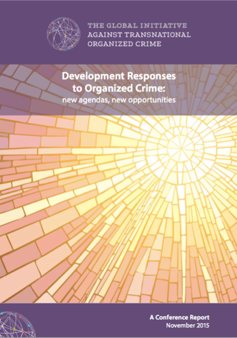Development policy shifts offer new ways of responding to organised crime


As these discussions have evolved, so, too, have ideas about how best to study and analyse TOC and its impact. In the past, the study of TOC focused mainly on the analysis of commodity and financial flows, as well as attempts to quantify the scale and size of criminal networks and enterprises. Such pursuits do remain relevant, and can indeed be indispensable for the study of certain illicit practices in particular contexts. That being said, increasing amounts of research are being dedicated to studying this newly-recognised link between organized crime and development, both in terms of its characteristics and in terms of how to combat it.
Several themes have emerged from this research, much of which has been conducted in the African context. First and foremost is the ever-closer relationship between organized crime and the state in many parts of the developing world. As the Global Initiative against Transnational Organized Crime detailed in a June 2014 report on organised crime in Southern Africa, criminal networks have penetrated the highest levels of government in several states across the African continent. This is not a particularly new phenomenon, and some have argued that it may even echo the formation of the nation-state itself.
Yet while it may not be new, state penetration by organized criminal networks can have severe consequences for development. In some cases, these consequences are direct. Deserving candidates for elected office may be threatened to the point of deciding not to run, for example, or state contracts may be awarded to cronies or other criminal associates at higher prices, at a cost to the state’s treasury. Other times, the consequences are more subtle, if no less damaging. A state penetrated by criminals may, over time, become a regional center for illicit commerce, as corruption among legislators and government officials causes the lines between legal and illegal activities to blur. The diamond industry in Zimbabwe is an excellent example of the latter, and the country’s unclear status vis-à-vis the Kimberley Process illustrates how difficult it can be to distinguish licit and illicit activities.

The second part of a comprehensive, development-centered response to organised crime is to determine, prioritise, and mitigate harm. In order to do so successfully, the definition of “harm” must be expanded beyond simple physical violence. As noted earlier, organised crime’s impact on societies can be wide-ranging and persistent, enduring long after the bullets have stopped flying. As such, any model of harm used in the context of organised crime will need to be flexible enough to be adapted to particular country situations, while also realising that the act of defining “harm” as an external actor itself has consequences and repercussions.
Third, responses must endeavour to reduce impunity and increase exposure for criminals and their acts. Doing so requires coordinated action by a myriad of actors on several fronts. Aid to legislatures and judiciaries, while important, must be only part of the plan. Other relevant partners include civil society organisations, who can hold themselves above political gridlock and address communities directly, and media outlets of all types, which play an indispensable role in disseminating the findings and results of investigations.
The fourth and final aspect of a holistic approach to countering organised crime is building resilience and changing incentives. Here the link with a development-based mindset is perhaps the strongest: the word “resilience” itself, for example, is borrowed from the development literature. Engendering resilience and reconfiguring incentive structures requires once again delving into the realm of power relations and social legitimacy. Examples of what this might look like in practice include increased emphasis on the perceptions and experiences of violence by communities, rather than states; focusing on vulnerable groups in societies rather than simply on flows of money or commodities; or, on a higher level, reconceptualising illicit trade as a complex social phenomenon rather than a series of reprehensible acts by a series of individual criminals.
As the activity surrounding the ASD2030 moves from discussion and creation to implementation, it will become ever more vital to monitor organized crime’s impact on development around the world and develop effective countermeasures. Taken together, the above points represent a solid basis for policymakers to build on, and may herald a new dawn for integrated approaches to organised crime.
